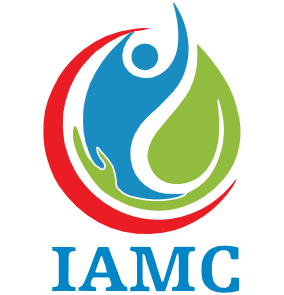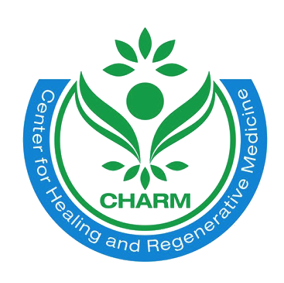"Pain is your body’s signal that something’s wrong."
What is pain?
Pain is an unpleasant feeling or sensation that your body uses to signal that something might be wrong. It can be sharp or dull, constant or occasional, and may occur in any part of the body. Pain is usually a warning sign from your nerves that something needs attention—like an injury, illness, or inflammation.
There are two main types of pain:
Acute pain – Comes on suddenly and usually doesn’t last long (like a cut, burn, or surgery).
Chronic pain – Lasts for a longer time (weeks, months, or even years) and may be caused by long-term conditions like arthritis or back problems.
What is Chronic pain?
Chronic pain is pain that lasts for a long time — usually more than 3 months — even after the original injury or illness has healed.It can be mild or severe and may affect daily activities, mood, and sleep. Unlike normal pain that goes away with healing, chronic pain keeps coming back or stays for a long time.
What are the hazards of chronic pain?
Social Impact
Pain can make it difficult for individuals to participate in everyday social activities. People may avoid gatherings, outings, or even simple conversations because of discomfort, fatigue, or irritability caused by pain. Over time, this can lead to isolation, loneliness, and weakened relationships with family and friends.
Psychological Impact
Chronic pain is strongly linked to mental health issues such as depression, anxiety, stress, and even low self-esteem. The constant discomfort can cause frustration, emotional exhaustion, and a sense of hopelessness. It becomes harder for patients to stay positive or motivated, leading to a decline in psychological well-being.
Quality of Life (QoL)
Pain interferes with many daily activities, including sleep, work, exercise, and self-care. People may struggle to maintain independence or keep up with personal goals. This leads to a reduced overall satisfaction with life, lower productivity, and a loss of enjoyment in everyday experiences.
What is interventional pain management?
Interventional Pain Management is a specialized medical approach for treating chronic pain by targeting its precise source. Rather than relying solely on oral medications, it involves minimally invasive procedures—such as directly injecting medication at the site of pain—to provide more effective and longer-lasting relief. This method is commonly used for managing pain in the back, joints, nerves, or following surgery, especially when conventional treatments are not sufficient.
Advantages:
- Minimally Invasive Procedures
- Fast recovery
- Long-lasting relief
- Can reduce or avoid using strong painkillers
So far, we have treated approximately 400,000 patients. Among them, 70% to 80% have experienced a full recovery, while an additional 10% to 20% have shown up to 80% improvement in their condition.
Procedures:
Nerve blocks,Radiofrequency oblations,Epidural steroid injection,Intercostal nerve block,Shoulder, elbow, ankle, knee, hip ,Sacroiliac intraarticular injectionTrigger point injection ,Pulse radiofrequencies, rhizotomies of peripheral nerves as well as nerve plexus,RACZ Procedure,Paravertebral Blocks, sympathetic Blocks, Cobalation Neucloplasty, PRP therapy , Prolotherapy , Intravenous Pain Cocktail Therapy and Acupuncture.
Diseases Treated:
Chronic back pain, neck pain , frozen shoulder, knee pain ,sports injuries, headaches(tension, migraine, cluster, Cervicogenic),cancer pain,neuropathy, fibromyalgia, neuralgias( occipital and trigeminal), Rheumatoid arthritis, Osteoarthritis, Plantar fasciitis Carpel tunnel syndrome ,Dupuytren Tenosynovitis.


What is interventional pain management?
Interventional Pain Management is a specialized medical approach for treating chronic pain by targeting its precise source. Rather than relying solely on oral medications, it involves minimally invasive procedures—such as directly injecting medication at the site of pain—to provide more effective and longer-lasting relief. This method is commonly used for managing pain in the back, joints, nerves, or following surgery, especially when conventional treatments are not sufficient.
Advantages:
- Minimally Invasive Procedures
- Fast recovery
- Long-lasting relief
- Can reduce or avoid using strong painkillers
- Brief hospital stay with same day discharge

So far, we have treated approximately 400,000 patients. Among them, 70% to 80% have experienced a full recovery, while an additional 10% to 20% have shown up to 80% improvement in their condition.
Procedures:
- Radiofrequency oblations
- Epidural steroid injection
- Intercostal nerve block
- Sacroiliac intraarticular shoulder, elbow, ankle, knee, hip injection
- Trigger point injection
- Pulse radiofrequencies
- Rhizotomies of peripheral nerves as well as nerve plexus
- RACZ Procedure
- Paravertebral Blocks
- Sympathetic Blocks
- Cobalation Neucloplasty
- PRP therapy
- Prolotherapy
- Intravenous Pain Cocktail Therapy
- Acupuncture
- Nerve blocks
Diseases Treated:
- Chronic back pain, failed back surgery syndrome
- Disk herniation(sciatica) pain
- neck pain
- frozen shoulder
- knee pain
- sports injuries, sprains, ligamentous injuries
- headaches(tension, migraine, cluster, Cervicogenic)
- cancer pain
- neuropathy
- fibromyalgia
- neuralgias( occipital and trigeminal)
- Rheumatoid arthritis
- Osteoarthritis
- Plantar fasciitis Carpel tunnel syndrome ,Dupuytren Tenosynovitis
- Post hemiplegia (stroke) pain
- phantom limp pain








